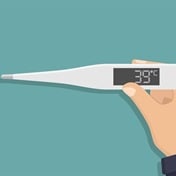
Endocsopy is a process of looking inside the body, by inserting an instrument called an endoscope.
The endoscopes
Early endoscopes were rigid tubes with a light source at their tip. The doctor looked down the tube to see inside the body cavity. Instruments can be passed down the endoscope to rinse out cavities, suck out their contents, or biopsy a piece of tissue for analysis. Rigid endoscopes are still used today in the bronchi (lungs) and oesophagus for some conditions.
Flexible endoscopes are also available, with a strong light source and video camera at their tip. The tip can be bent in any direction, so the endoscope can even “look around corners”. The magnified image from the camera is viewed on a large TV colour screen, showing detail more clearly than can be seen with the naked eye. Flexible endoscopes come in various thicknesses and lengths, and can be inserted into any body opening – mouth, anus, urethra or nose. They can also be inserted into other regions of the body through a small incision in, for instance, the chest or the abdomen, or even into a joint.
Another type of endoscope has an ultrasound probe at its tip. When the endoscope is inserted, the tip can be positioned right against the organ or body part under investigation, giving a much clearer ultrasound picture than would be obtained from an ultrasound probe placed on the surface of the body.
Why and how are they used?
Because instruments passed into body openings cause pain and discomfort, endoscopy is usually done under heavy sedation or anaesthesia (general, local or topical). The patient is thus pain-free, and lies still, allowing the examination to be done quickly, efficiently and safely. Instruments are cleaned and sterilised before being used on the next patient.
1. Diagnosis
Endoscopes allow us to enter and see parts of the body not normally visible without cutting something open. This is called a “minimally invasive procedure”, and has revolutionised accurate diagnosis in many conditions. Not only can abnormalities be seen, but tissues can be sampled to give a definite diagnosis.
A variety of gastrointestinal disorders are investigated endoscopically, such as
- Oesophageal, stomach and duodenal disorders,
- Liver, bile duct and gall bladder problems,
- Pancreas disorders, and
- Rectal, sigmoid and colonic problems.
Urinary tract disorders can also be investigated by inspecting the
- Urethra,
- Bladder, or
- Ureters.
Uterine endoscopy can be used, for instance during pregnancy.
Lung and bronchial disorders are often investigated endoscopically.
Joint disease is most often diagnosed by arthroscopy with special small endoscopes.
Endoscopic ultrasound is widely used in transoesophageal ultrasound. Here, the endoscope is inserted into the oesophagus, and sometimes advanced into the stomach, to give pictures of the chambers, function and valves of the heart, and the aorta.
For endoscopy of the abdomen, several small incisions may be needed for separate ports to insert the camera and other instruments such as graspers or retractors. To allow the surgeon space to see and work, the abdomen must first be inflated with carbon dioxide gas, to lift the abdominal wall up and away. A separate incision is needed for the cannula used for this. After the procedure, the gas is evacuated, and all the incisions are stitched closed.
2. Treatment
Endoscopes can also be used for treatment: many operations are done these days endoscopically, such as
- cholecystectomy,
- appendicectomy,
- sympathectomy,
- hernia repair,
- removal of inhaled foreign bodies from the airways,
- sinus surgery,
- some neurological operations,
- joint surgery,
- removal of kidney stones,
- removal of colon polyps, and
- cautery of bleeding sites.
The advantage here is that the patient's stay in hospital is minimal (often discharged the next day), patient discomfort is much less than with conventional surgery, and recovery is faster than with open (conventional) surgery. For example, traditional cholecystectomy involves a 10-15cm incision in the abdomen, several days in hospital, and another few days to recover at home, before work can be resumed. Endoscopic cholecystectomy patients are often discharged the next day, and are back at work in two to three days, assuming no complications arise.
Risks and complications
The efficient use of an endoscope requires special training, and good hand-eye coordination for remote controlled instruments. The laparoscopic surgeon cannot feel structures with his fingers, and must rely more on visual interpretation. Mistakes can thus be made. For example, a surgeon who can feel that a lump pulsates will not stick a needle into it, because he knows it may bleed torrentially. The pulsation may not be visible, so the unwary laparoscopic surgeon who cannot feel the lump but only see it, may risk cutting into it, causing a severe bleed. In such cases, or when it is obvious that the procedure cannot be completed endoscopically, the operation is switched to a conventional one, in which an incision is made to gain access to the organs.
Risks associated with endoscopic surgery are:
- bleeding,
- infection,
- spillage of contents into body cavities,
- unsuccessful attempts at surgery,
- perforation of the cavity into which the endoscope is inserted, and
- damage to nearby organs by the various instruments.
In such cases, the operation is converted to a conventional one, to repair the damage.
Laparoscopic surgery is becoming more and more popular. Instruments are more sophisticated and compact, and can be used in a variety of ways. The safety of endoscopic work is also improving, and in many case, laparoscopic surgery has surpassed conventional approaches. In the US, endocsopic cholecystectomy is now regarded as the standard procedure.
(Dr A G Hall)




 Publications
Publications
 Partners
Partners











